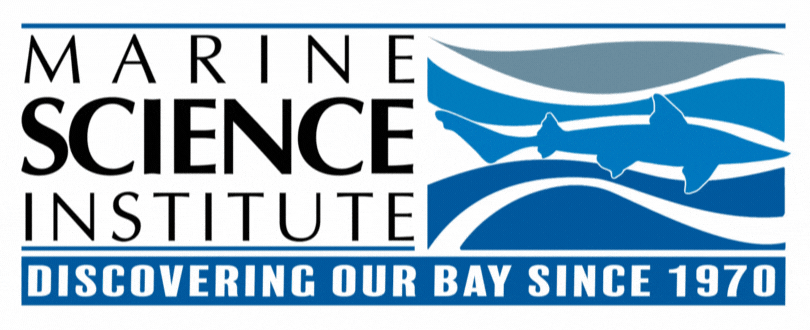When it's summer, get ready for chondrichthyes! CREATURE FEATURE: broadnose sevengill shark
- Naomi Deal

- Jul 18, 2018
- 2 min read
Updated: Aug 7, 2018
During the spring and summer seasons, we see an increase of cartilaginous fish populations in the SF Bay. This week, it's the broadnose sevengill shark

At Marine Science Institute, we're always excited when we get to see the broadnose sevengill shark (Notorynchus cepedianus). Sevengills are wide ranging and appear in mostly temperate coastal seas worldwide, including the San Francisco Bay. The most distinguishing feature of this shark is the seven pairs of gill slits, making them easy to identify as most sharks only have five pairs of gill slits.
These sharks are born at a length between 15-17 inches and can grow up to 10 feet! Researchers have counted large eggs in ovaries of mature females, suggesting that shark pup litters are relatively large with an estimated range between 67-104 pups, while there have been litters of 82 young recorded. The San Francisco Bay is an estuary, making it an ideal habitat for these young shark pups to grow up as there's protection from large predators in the rugged open seas, temperate waters, and plenty of food for them to eat.
What do broadnose sevengill sharks eat? Just about anything! The sevengill grows to a large size and is a powerful swimmer with strong jaws, allowing it to eat larger prey such as other sharks and harbor seals. Although sevengills appear in deeper waters, these sharks prefer hunting in shallow inshore waters, thus explaining why they occur in shallow San Francisco Bay waters, likely feeding on benthic (bottom) dwelling prey such as bony fish, crabs and carrion (decaying flesh of dead animals).

There is still much to learn about this shark's behavior and its populations, as according to The IUCN Red List of Threatened Species, there isn't enough data available to determine patterns of population depletion. Here at Marine Science Institute, we stay busy carefully recording data of fish we collect and release on our ship, the R/V Robert G. Brownlee . MSI has been sharing and collecting information on the fishes found in the San Francisco Bay for well over 40 years through our rigorous Fish Data Internship Program to increase understandings and awareness of our local marine life.
Produced and Edited by Naomi Deal
__________________________________________________________________________________
Resources and References:
Compagno, L.J.V. 2009. Notorynchus cepedianus. The IUCN Red List of Threatened Species 2009: e.T39324A10200310. http://dx.doi.org/10.2305/IUCN.UK.2005.RLTS.T39324A10200310.en
Broadnose sevengill shark. Animal Guide. Animals & Exhibits at the Monterey Bay Aquarium. (July 2018) https://www.montereybayaquarium.org/animal-guide/fishes/broadnose-sevengill-shark







Throughout your journey in Snow Rider you'll collect Christmas gift boxes that unlock new and unique sleds.